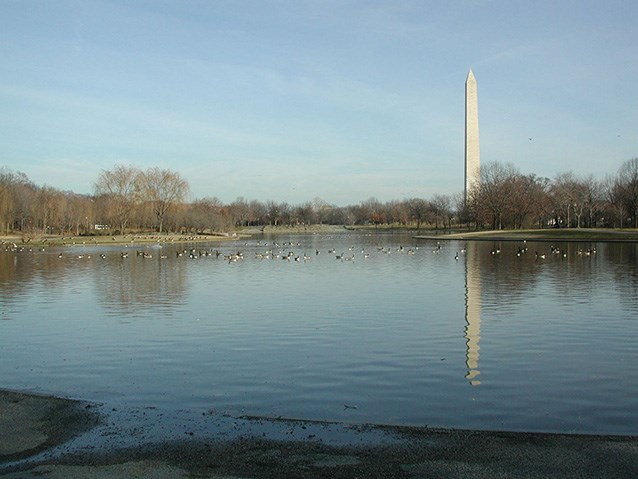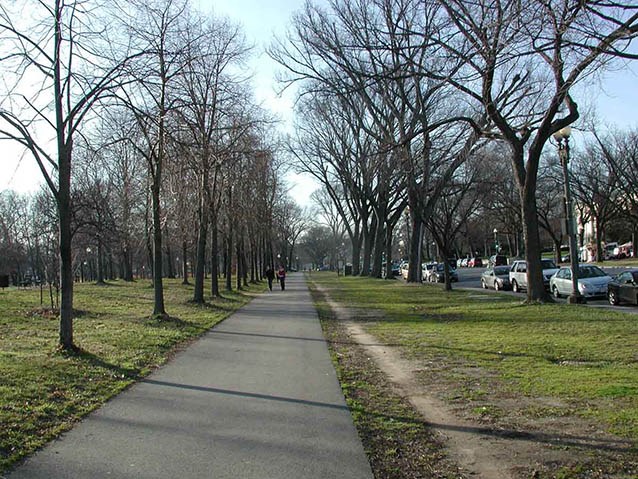Last updated: October 12, 2021
Article
Constitution Gardens Cultural Landscape

NPS
The reclaimed lands were graded, covered with top soil, seeded with grass, planted with trees, and developed into recreational areas. In the 1930s, an earth-and-concrete flood control levee was erected along the south side of the area. It forms part of a larger legislated flood control project that is still maintained by the U.S. Army Corps of Engineers and the National Park Service. It also protects a large section of Washington from flooding.

NPS
Over two thousand (2,654) trees were planted at the time the park was built, in 1975-76, but a large percentage of these soon died because of poor soil conditions and heavy rains; many of the existing trees are replacements. Trees within the park are primarily a mixture of native deciduous species and flowering upland understory species. Because of replacements, the original species composition has been altered and is now more complex. In addition, some planting locations have been altered. Several existing trees were incorporated into the design, mostly at the west end near the Vietnam Veterans Memorial, and at the east end near the Lockkeeper’s House are several trees that pre-date the establishment of Constitution Gardens.

NPS
Though secluded from the highly public grounds of the Lincoln Memorial and Washington Monument and the arterial road of Constitution Avenue, Constitution Gardens is tied to these other areas through circulation and views. The statues of the Three Servicemen and the Vietnam Women’s Memorial were placed to provide views from specific locations of the Vietnam Veterans Memorial.
Quick Facts
- Cultural Landscape Type: Designed
- National Register Significance Level: National
- National Register Significance Criteria: A,B,C
- Period of Significance: 1882-1993
